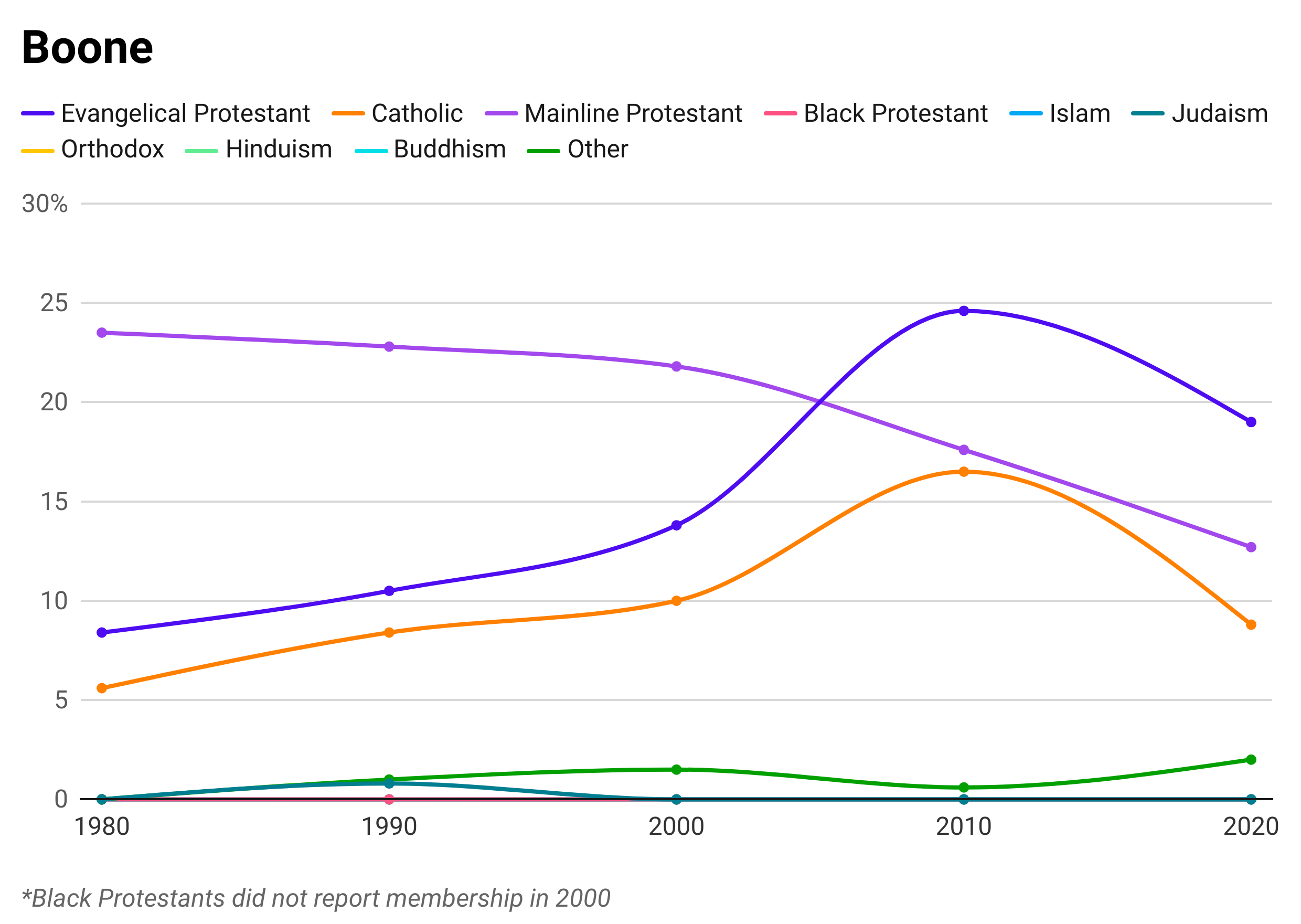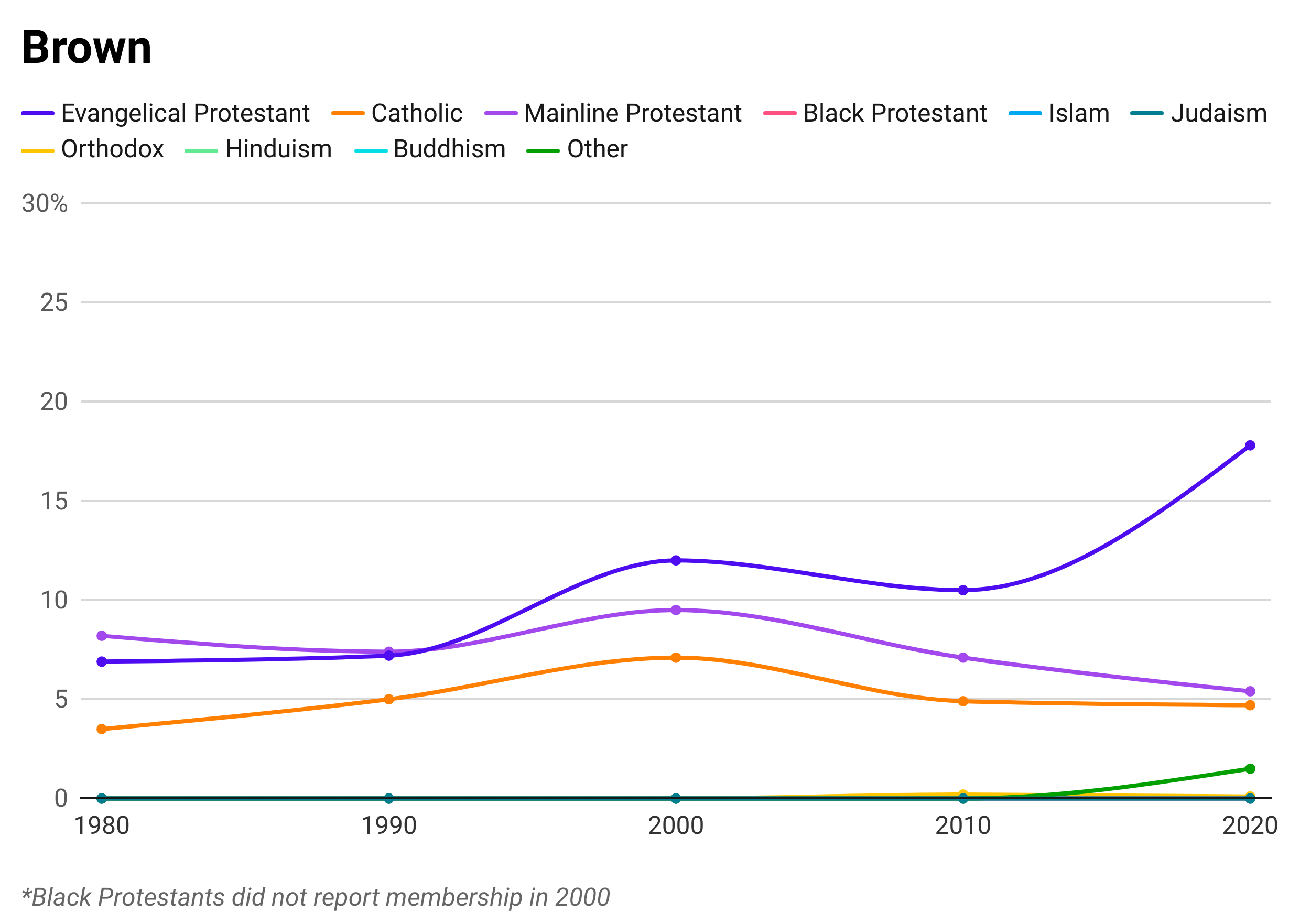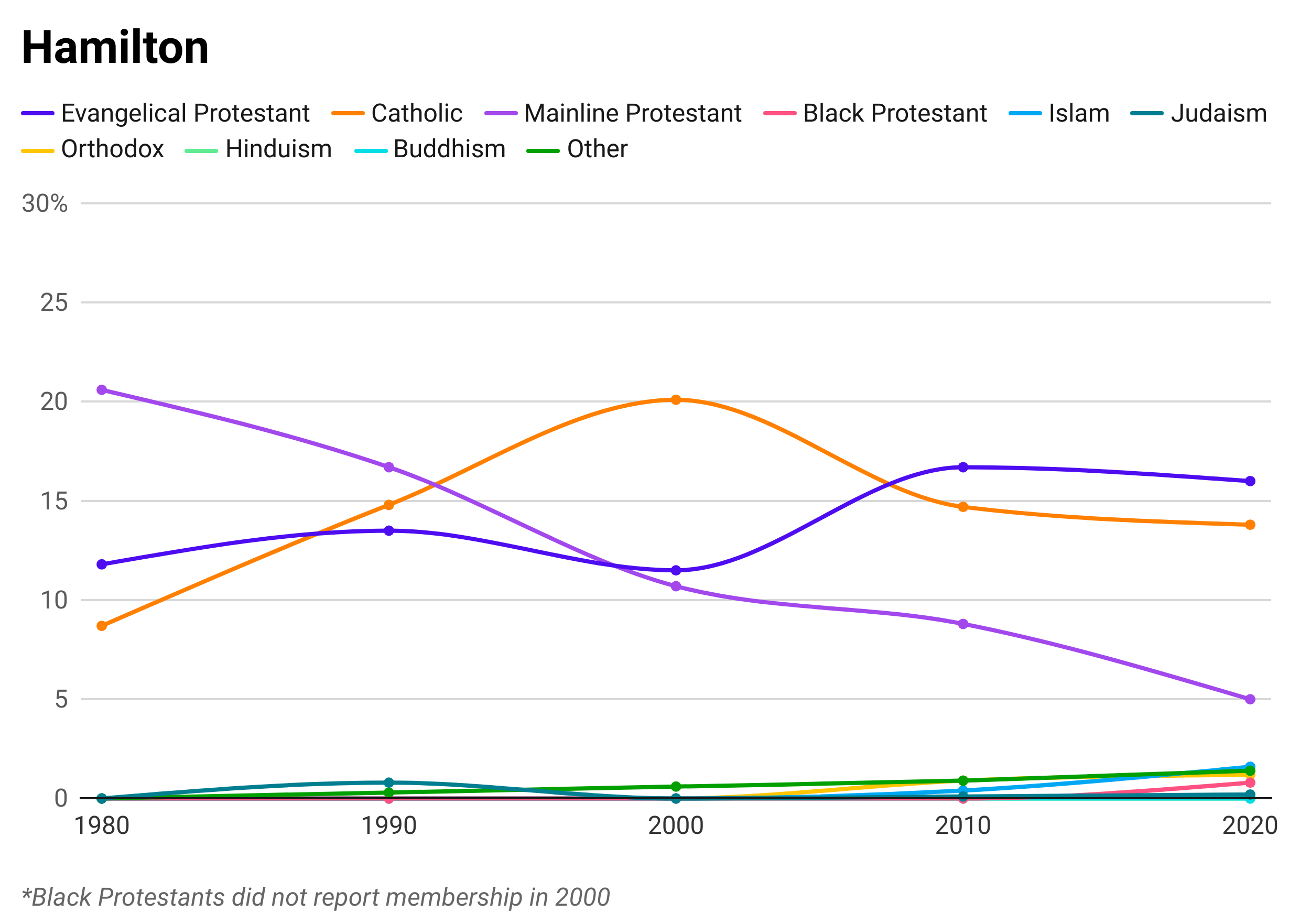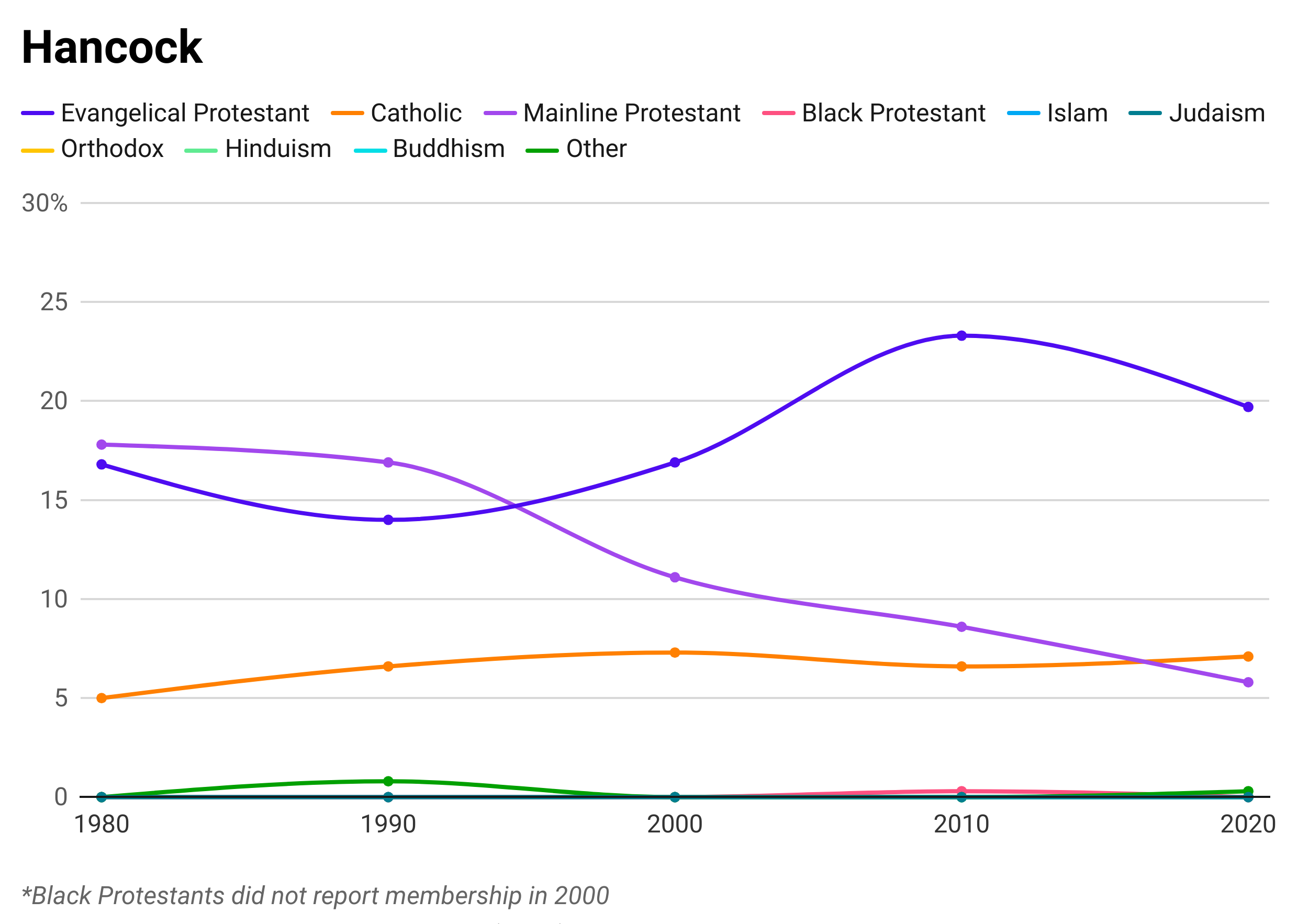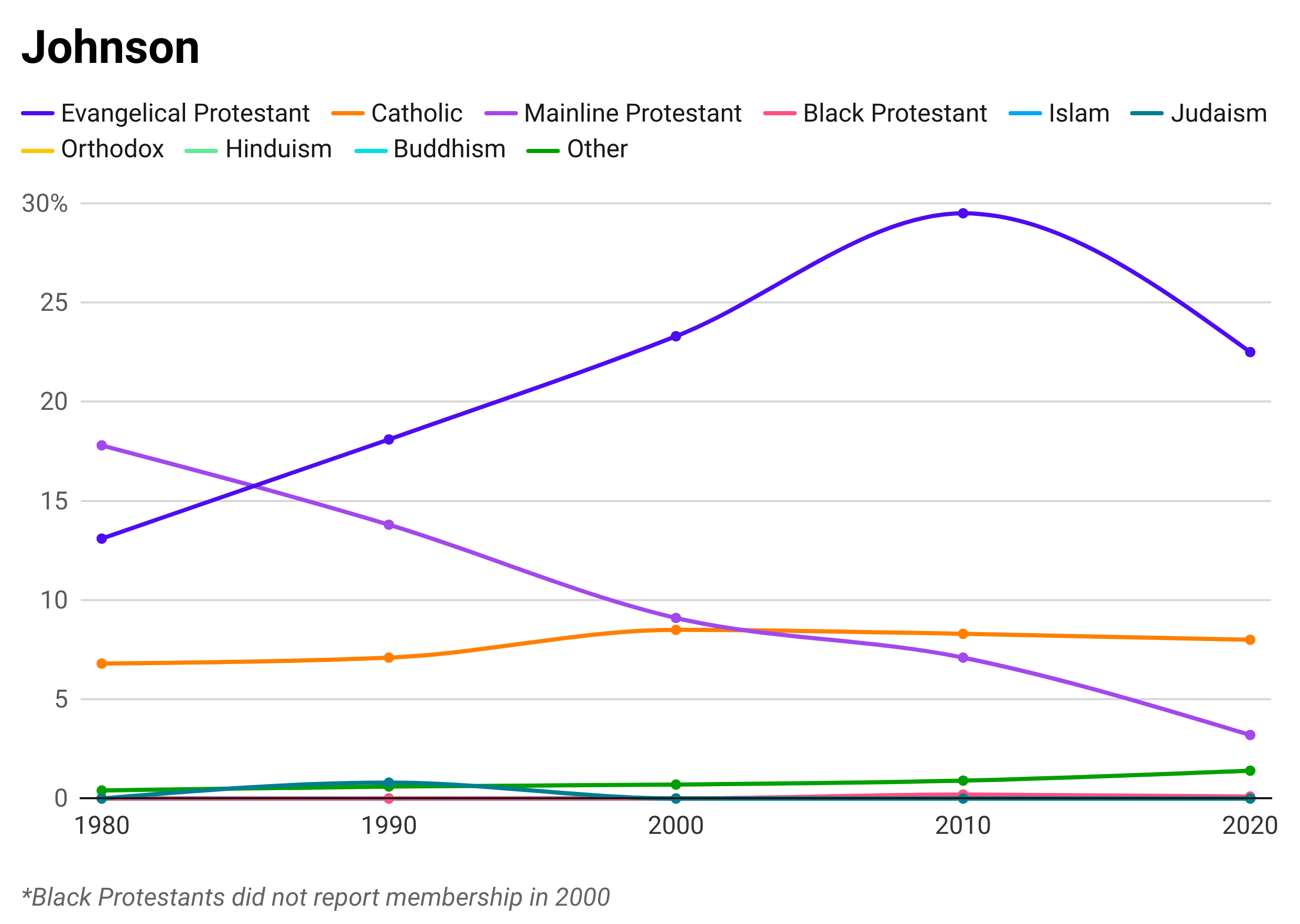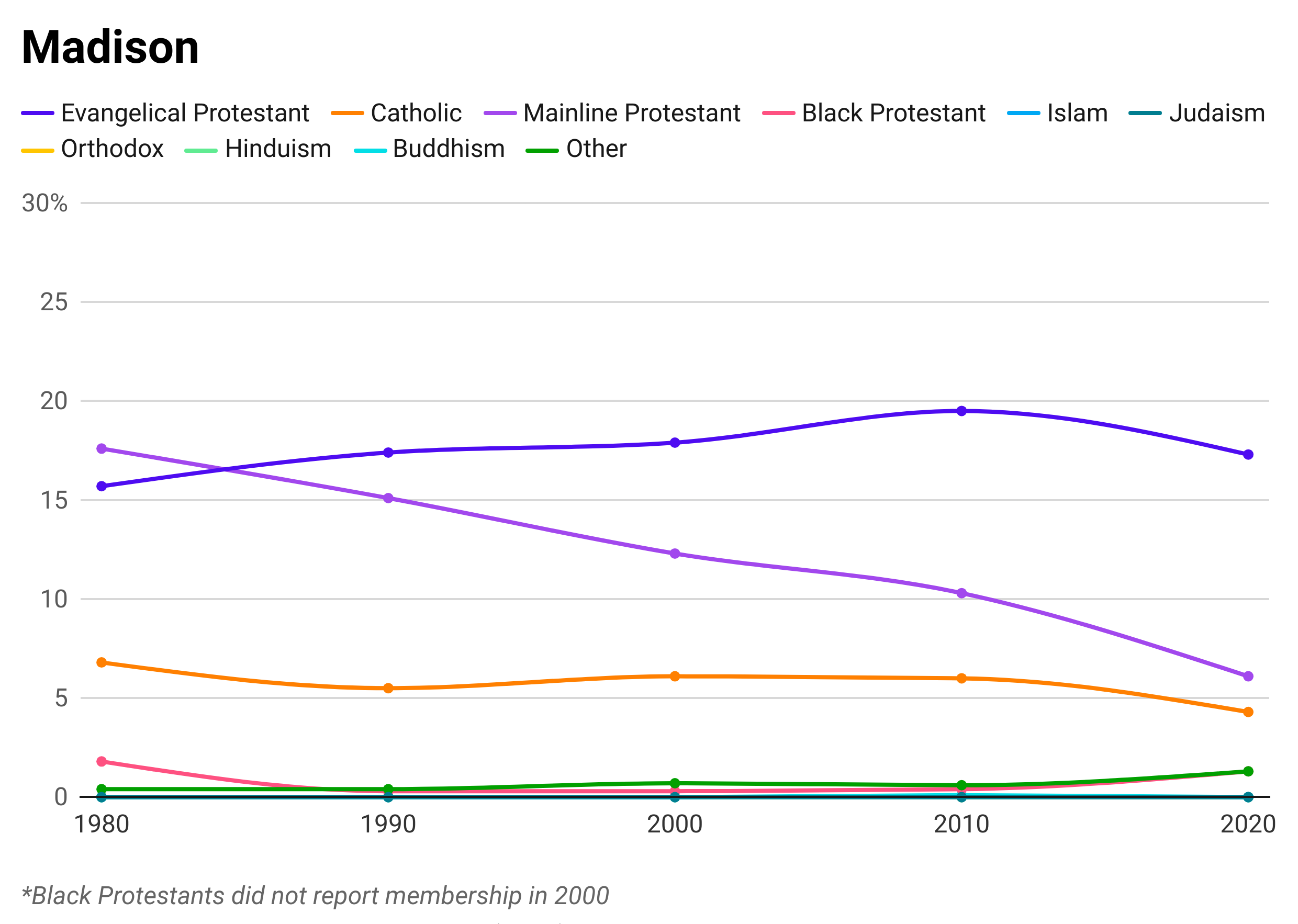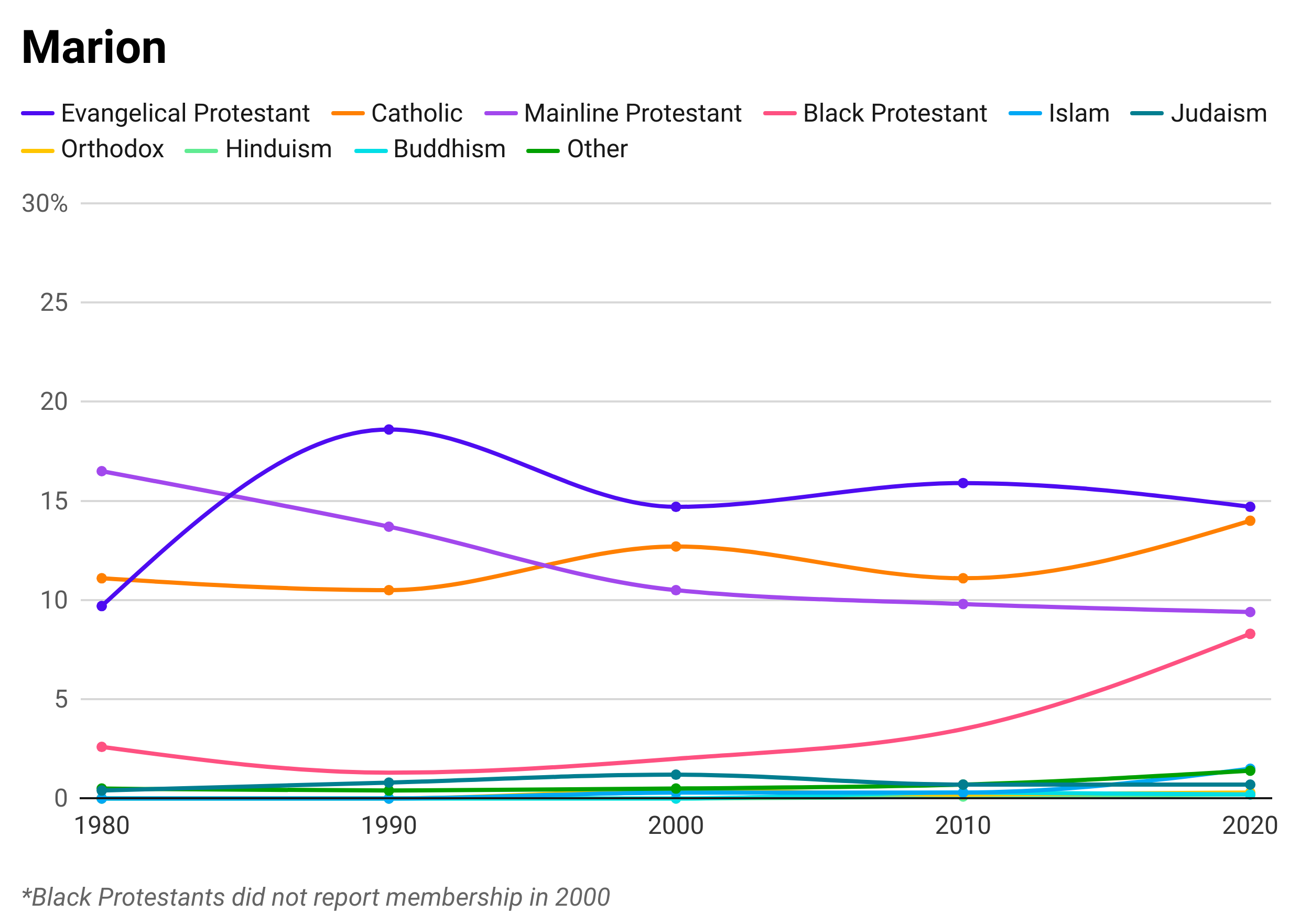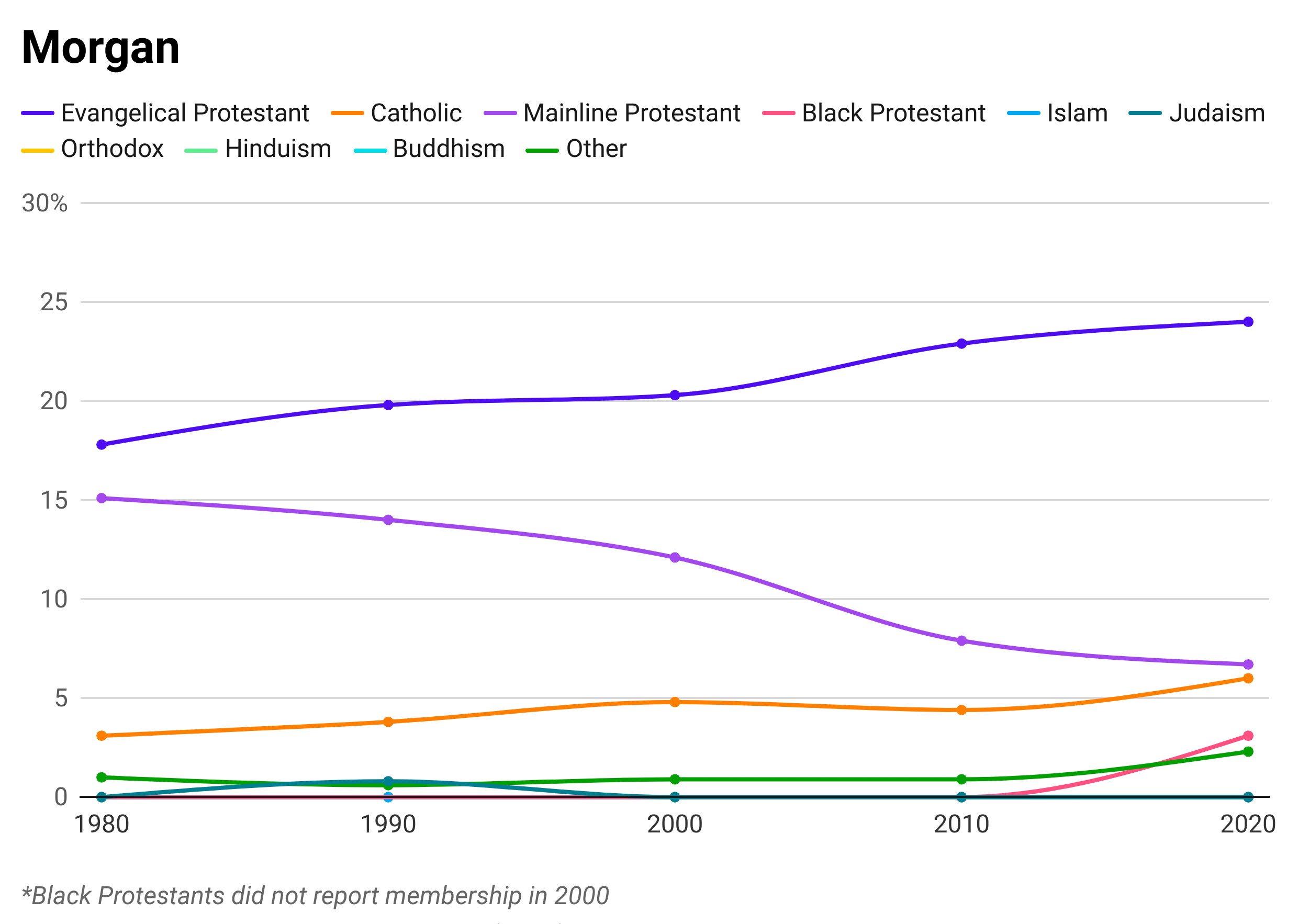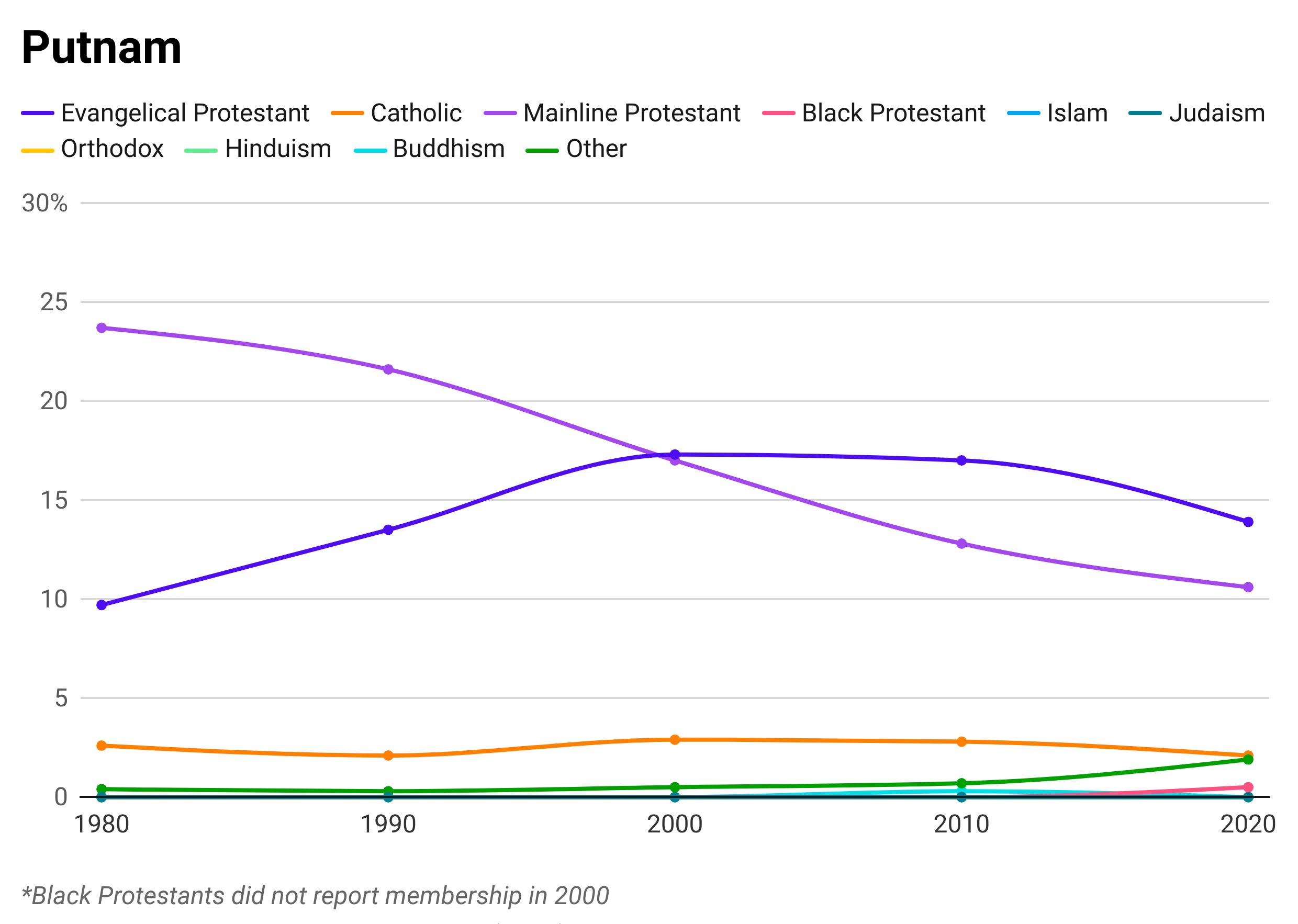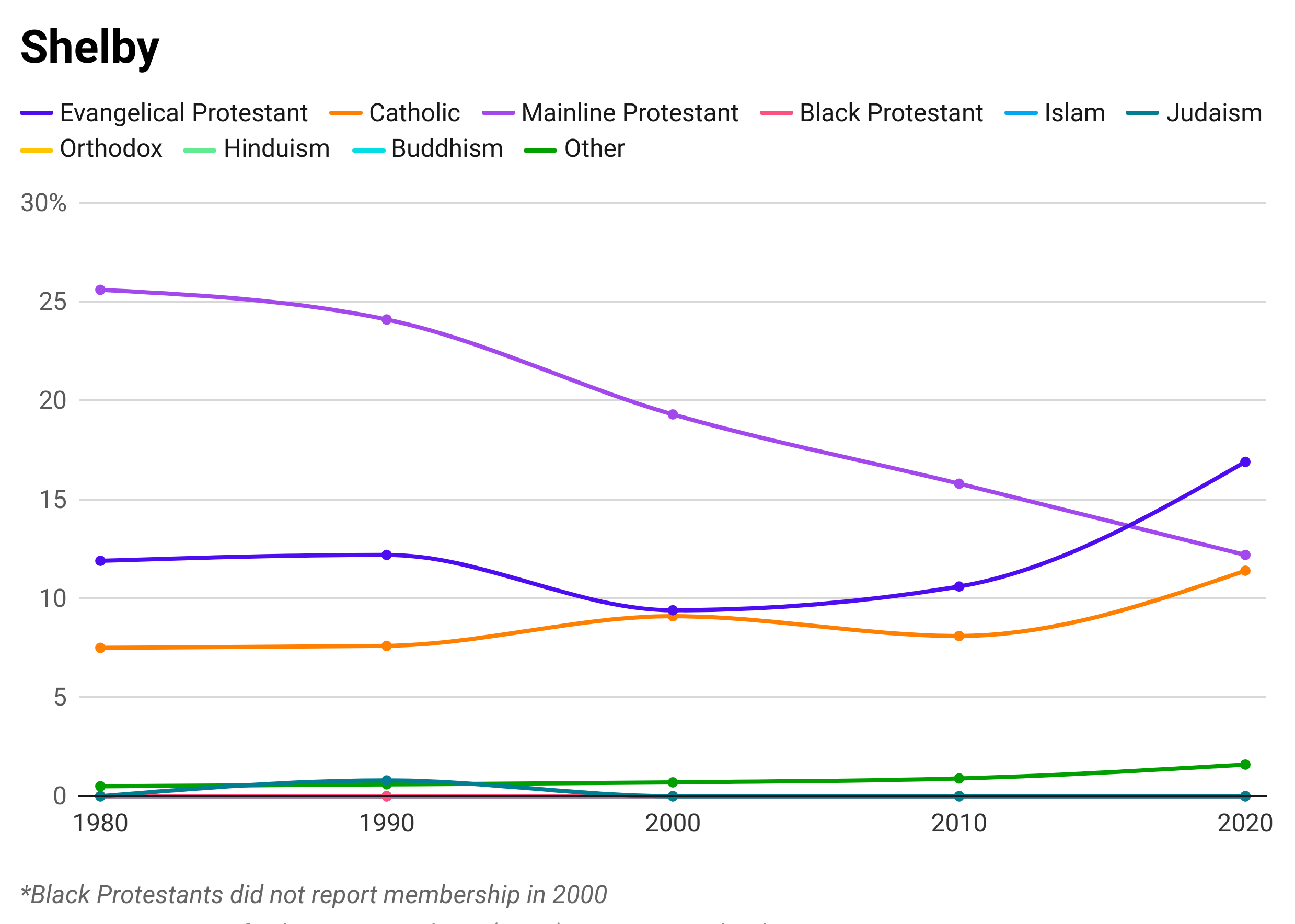Religion
Religion has long been central to the social and cultural identity of much of Indianapolis. Today, there are over 1,200 congregations, representing many faiths and denominations.
A Changing Religious Landscape
From its beginning, Indianapolis religion has been predominately Christian Protestant. Mainline denominations—Baptist, Methodist, Presbyterian, Episcopalian, Lutheran, Church of Christ, Christian Church (Disciplines of Christ), and Friends (Quakers)—have claimed the most members throughout much of the city’s history. Catholics and Jews also were early arrivals, but their numbers were small until the late 19th century.
Immigration from eastern Europe at the turn of the 20th century and from Central America during the late 20th century made Catholics the largest religious group, with about 40 percent of the adhering population (20 percent of the total population). Other world religions, such as Hinduism, did not appear in significant numbers until the 21st century, although their total numbers remain small compared to other urban areas.
Membership by Faith Tradition by Percentage of all Adherents
The chart below reveals the changing shape of religion in Marion County and the 11-county Indianapolis MSA. Mainline Protestant denominations have declined since 1980, with Evangelical and Black Protestants increasing as a percentage of religiously affiliated residents. Recent Latino immigration has made Catholics generally equal to Evangelical Protestants in Marion County.

Diversity Among Christianity
Protestants are the majority religious tradition in every metro area county, but their majority varies significantly by county. For instance, there is a much greater share of Catholics in Hamilton County than in Putnam, Morgan, or Brown Counties. Other religious traditions also vary by county due to immigration patterns as well as other variables.
Membership by Denomination for the Indianapolis MSA
View the full interactive version to see more details including membership trends and the top five protestant groups of each county.
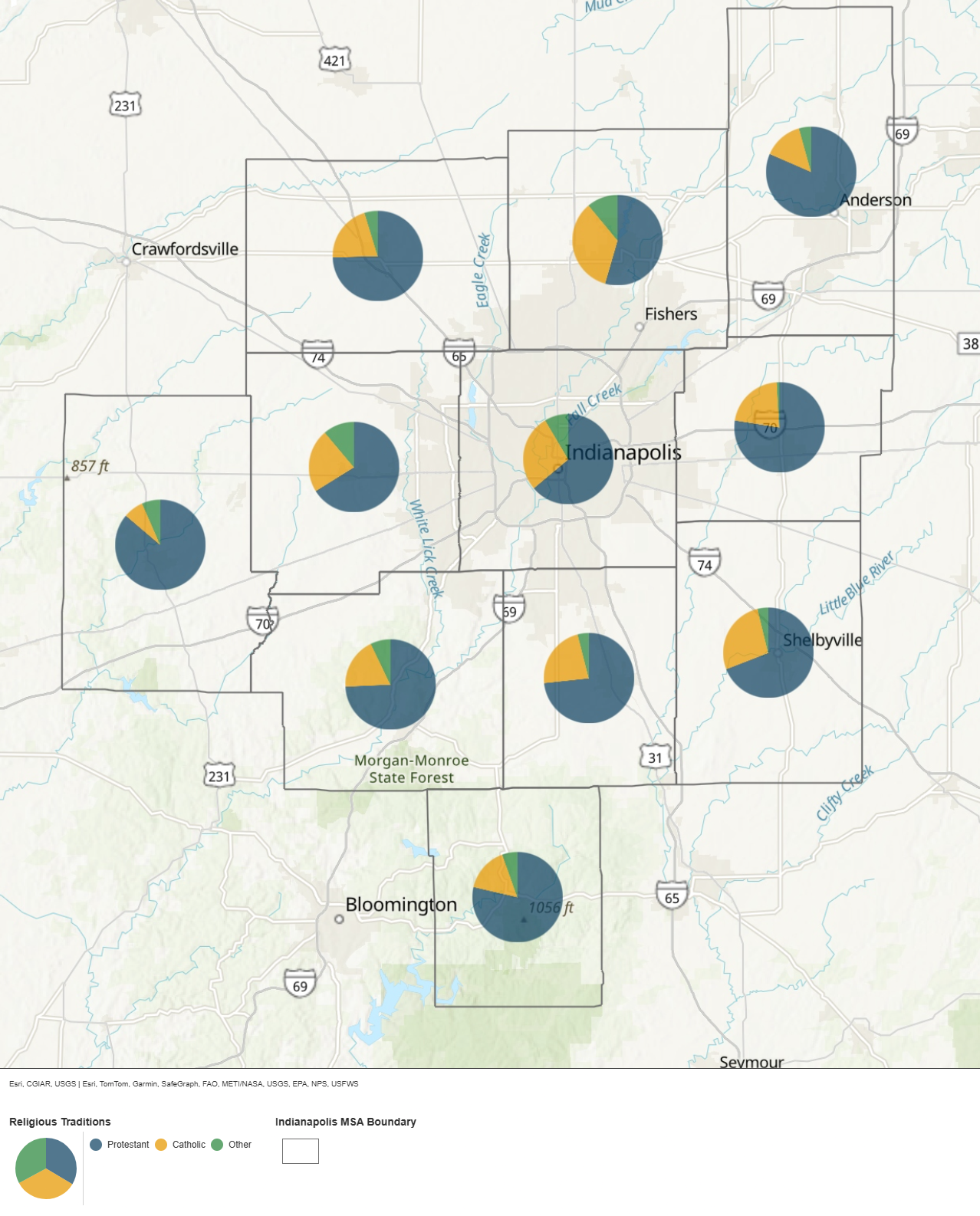
Membership Trends by Faith Tradition, Indianapolis MSA, 1980-2020
The faith traditions most practiced in the Indianapolis MSA between 1980 and 2020 are Evangelical Protestant, Mainline Protestant, and Catholic. Other faith traditions include Black Protestant, Islam, Judaism, Orthodox, Hinduism, Buddhism, and Other.
These graphs track the percentage of adherents, or individuals counted as belonging to some degree, among the total population. They do not reflect absolute numbers.
Click on the arrows to see the percentage and membership trends for individual counties in the Indianapolis MSA.
Congregational Growth & Movement
Congregations historically have moved with their members as the city has grown. Before the Civil War, the city’s population lived in the Mile Square, and five churches were on the Circle. Now, most of those churches have followed their members away from the city center. The example of Second Presbyterian Church reveals this movement dramatically.
The official separation of church and state in America meant that congregations competed for members. Protestant churches frequently engaged in a practice of planting new churches. The rivalry between the two styles of Presbyterianism, for example, led First Presbyterian and Second Presbyterian to establish six new congregations. Catholics also established new parishes but as geographies to serve members where they lived. Megachurches, a recent nondenominational or independent form of Christian church, has planted new congregations as satellite campuses of the main church complex.
Membership Movement for Second Presbyterian Church (SPC), 1928-2023
1928

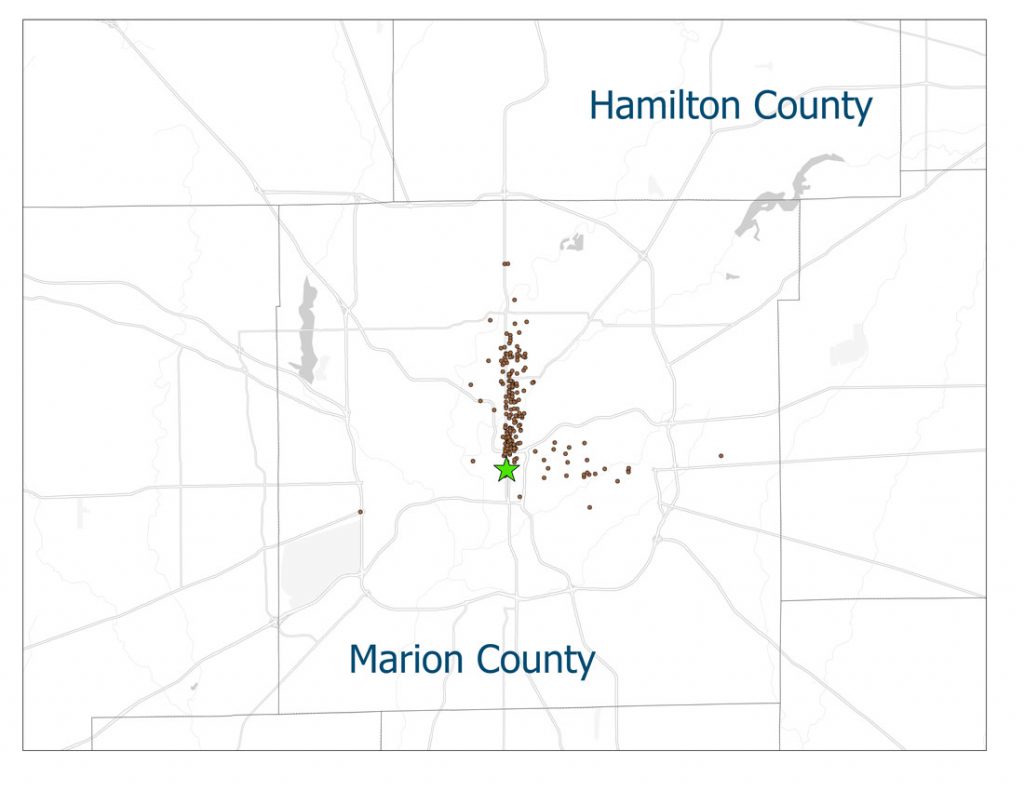
In the early 20th century, Second Presbyterian Church of Indianapolis was one of the city’s elite congregations. In 1928, its members lived on the city’s near north side—where most of the city’s upper-class lived.
1947

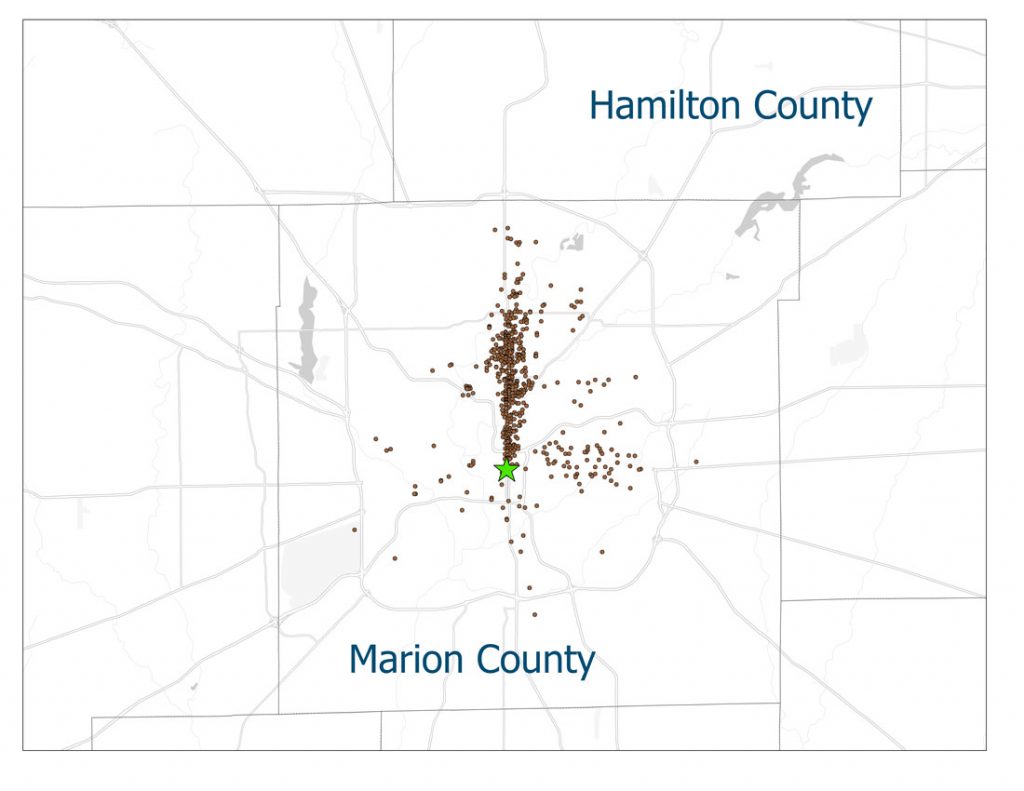
By 1947, Second Presbyterian’s membership distribution reflected the northward movement of Indianapolis’s middle-class and upper-middle-class population.
1964

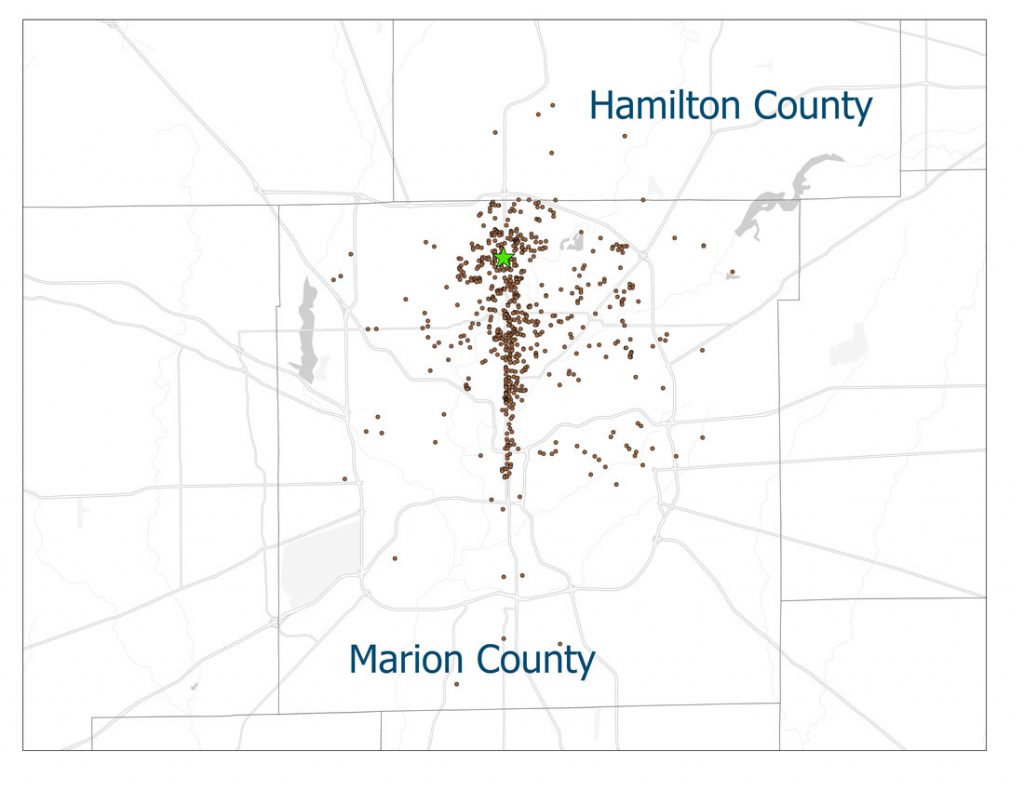
In 1959, Second Presbyterian relocated from downtown Indianapolis to 77th and Meridian Streets on the far north side. By 1964, only a small percentage of members remained in the old neighborhood.
2005

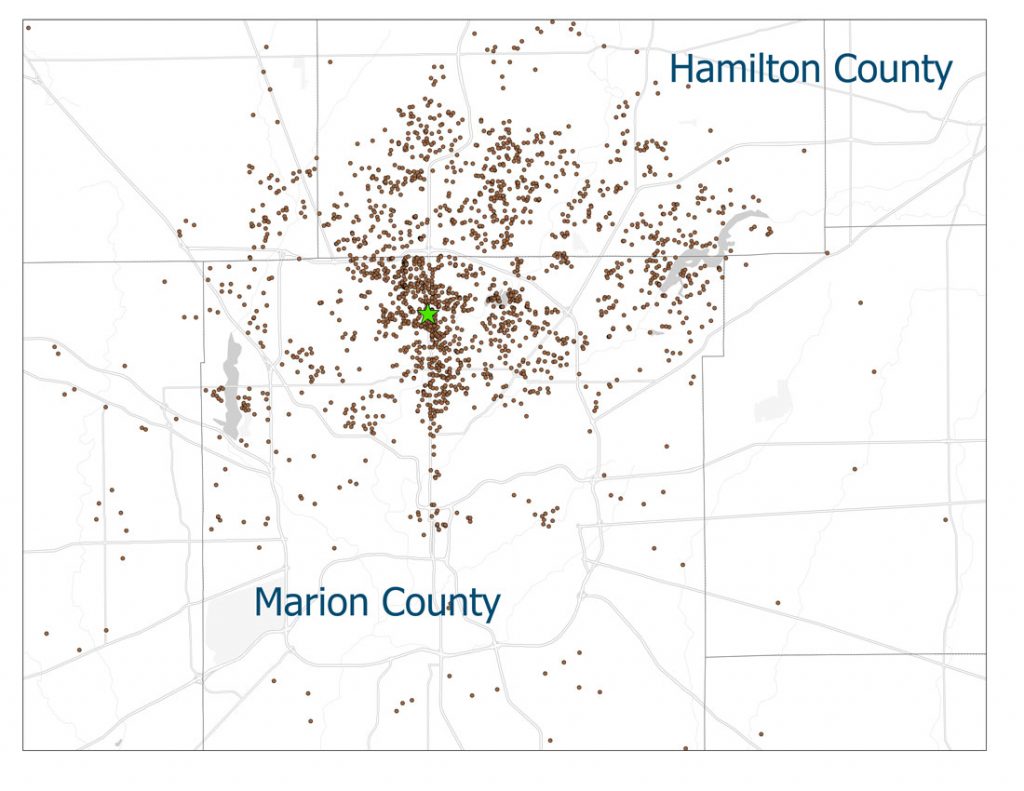
By the late 1990s, Second Presbyterian Church drew members from a wide band across the entire north side and from the suburb of Carmel in southern Hamilton County—areas which remain among the region’s wealthiest.
2023

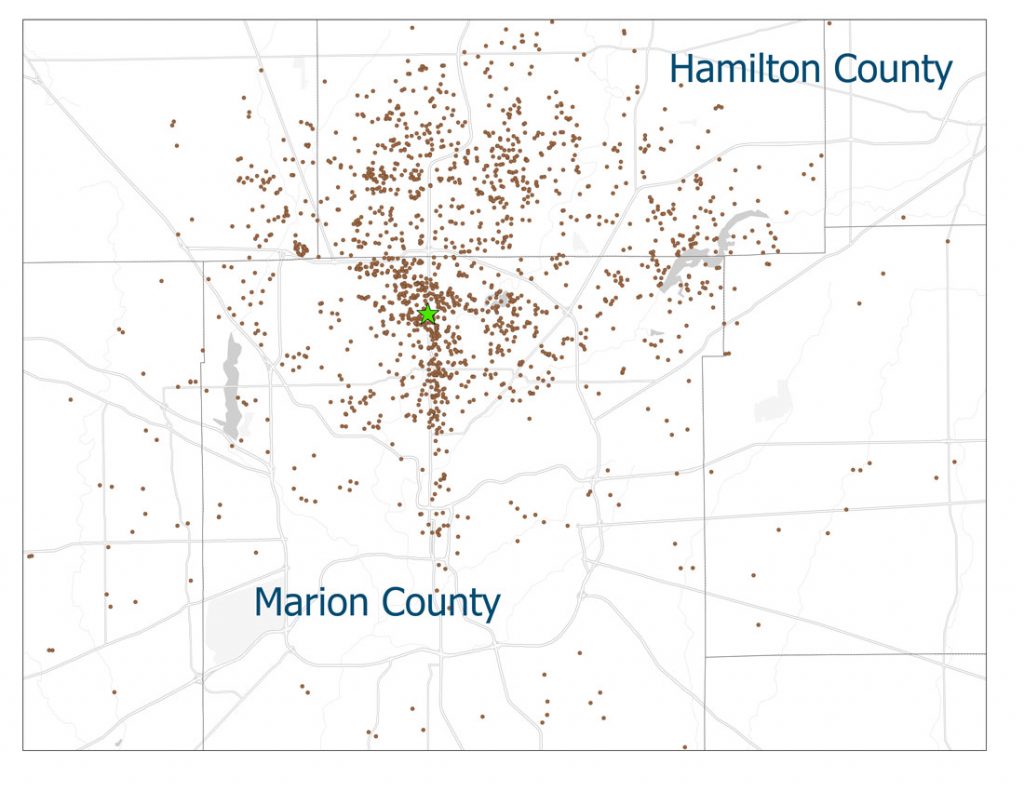
Membership residences changed relatively little from 2005 to 2023. Members spread somewhat further north and east, tracking the city’s suburban population.
Indianapolis Congregational Mergers and Movement
Mergers and splits also are common occurrences in the city’s religious history. Jewish congregations merged, often following national and international trends. Protestant congregations at times merged, as in the 1968 merger of the Evangelical United Brethren and Methodist Church, which became the United Methodist Church. Denominations also split, as Presbyterians did in 1837, and they began or planted new congregations, as shown below.
Jewish Congregation Mergers
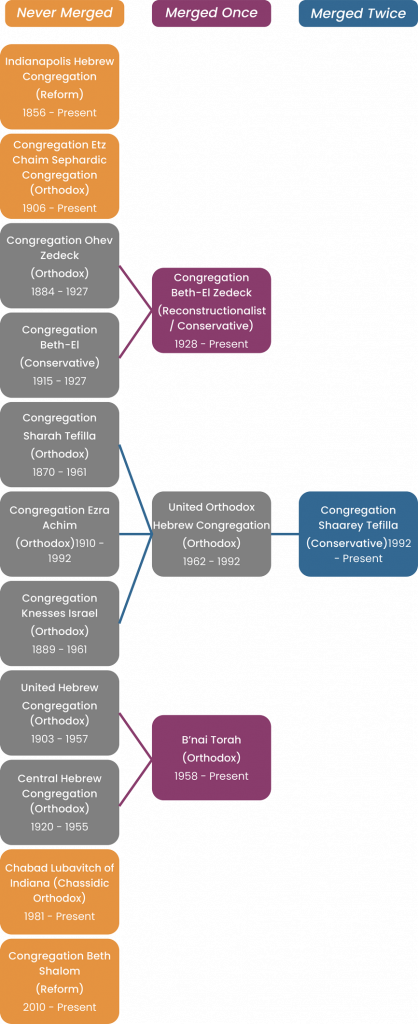
Genealogy of Indianapolis Presbyterian Churches
In the 19th Century, theological differences in Presbyterianism resulted in Second Presbyterian forming after a split from First Presbyterian. Each congregation began new congregations to foster their beliefs.
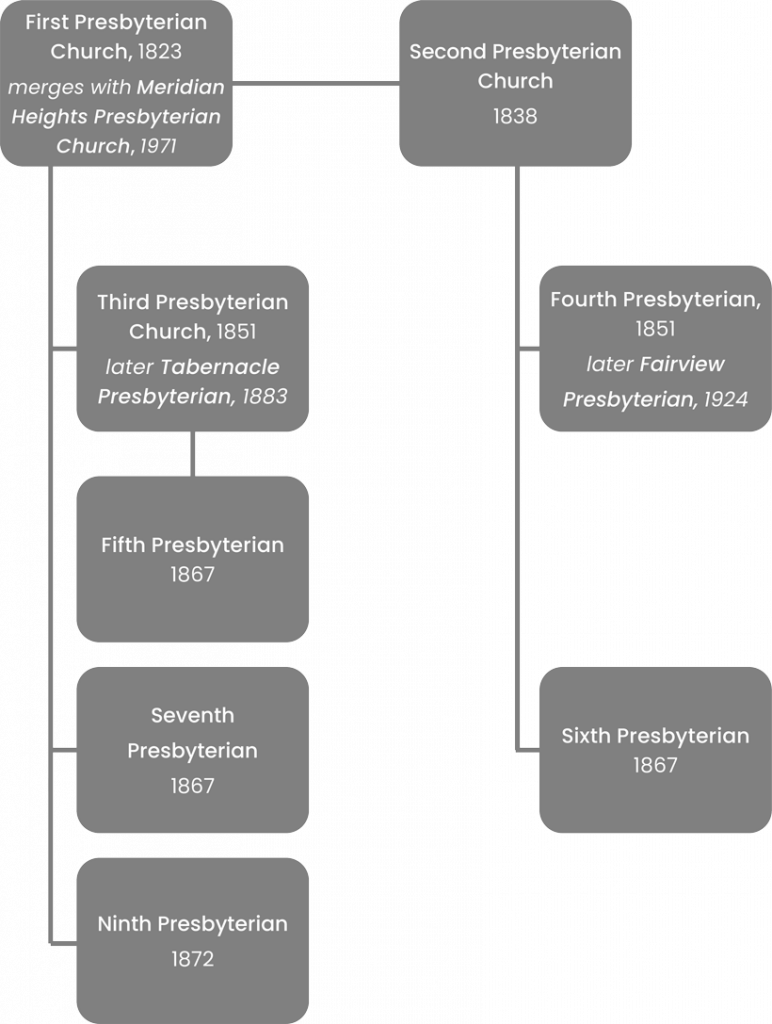
In the 20th century, Presbyterians began a plan for growth to meet the needs of newly formed suburbs. These congregations included:
Home Presbyterian (1897), Grace Presbyterian (1897), Irvington Presbyterian (1906), Witherspoon Presbyterian (1907), Immanuel Presbyterian (formerly Sutherland, 1908), Meridian Heights Presbyterian (1909) (merges with First Presbyterian to become First Meridian Heights Presbyterian, 1971), Wallace Street Presbyterian (1925), and Christ Presbyterian (formerly Prentice, 1929). Northminster Presbyterian (1945), Covenant Presbyterian (1949), St. Andrew Presbyterian (1955), Orchard Park Presbyterian (1956), and Faith Presbyterian (1960, from historic New Providence-Southport, 1833), Korean Presbyterian (1981).
Megachurches in Indianapolis MSA
This map of Protestant churches with memberships above 2,000 indicates that this is a suburban phenomenon. The one Black megachurch, Eastern Star Missionary Baptist, is well inside I-465 but all of the others are either outside or very near that perimeter. The development of megachurches was one of the most important facets of American religious life in the late 20th century. View the full interactive map to see additional information including average attendance, faith traditions, and associated satellite churches.
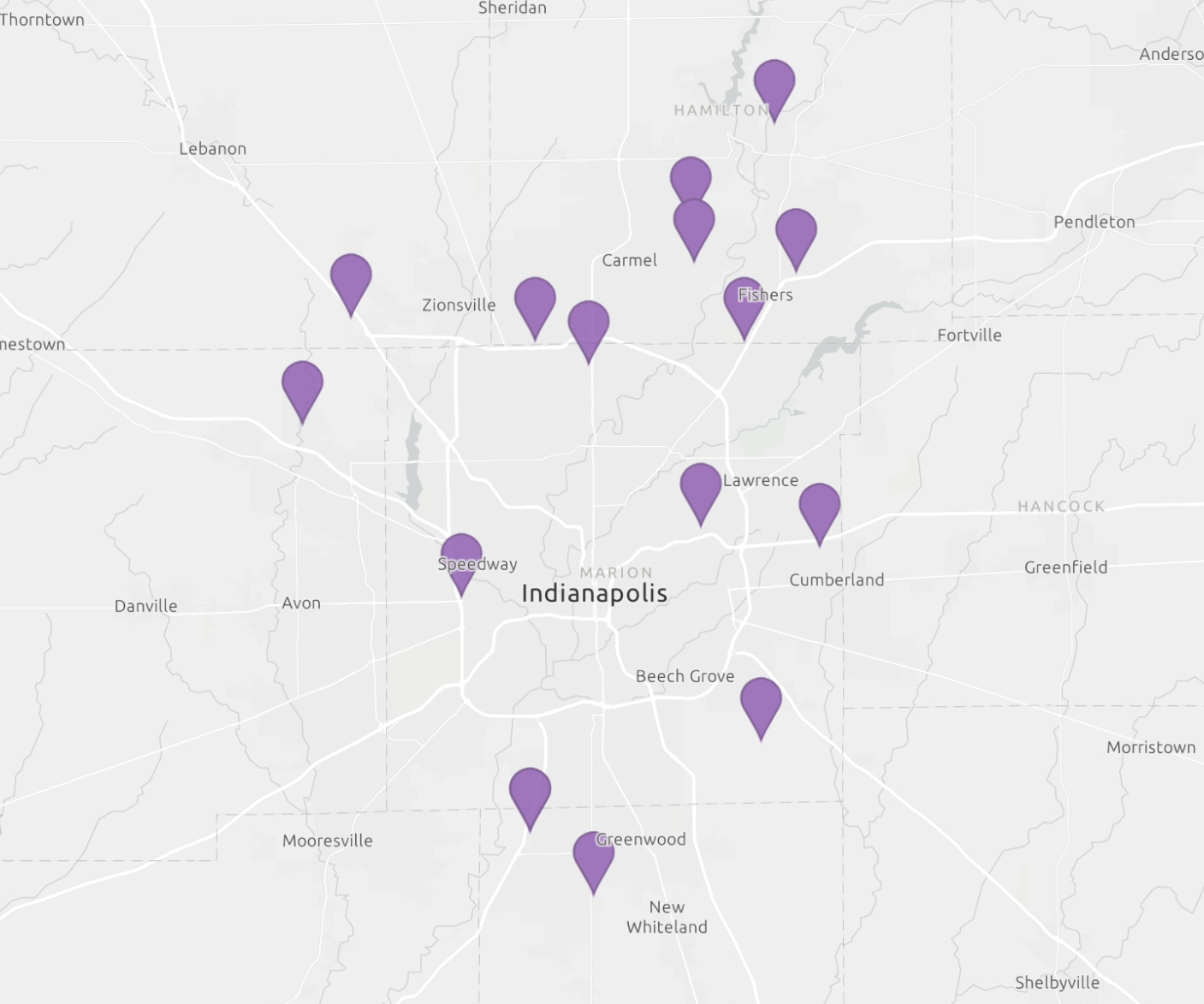
Civic Impact of Religion
Religion has long been central to the social and cultural identity of much of Indianapolis. A church was among the first institutions established after settlement, and a Sunday School offered the first formal education for the capital’s youth. Today, over 1,200 congregations represent more than 100 Christian denominations, as well as Jews, Hindus, and other world religions.
Both before and since the advent of governmental services, religious institutions have played a significant role in community service activities, such as caring for the poor and homeless, healing the sick, supporting mental health, and providing education. They have also promoted arts and culture, especially music and theatre. Congregations have provided citizens with opportunities for leadership, philanthropy, social justice, and civic involvement.
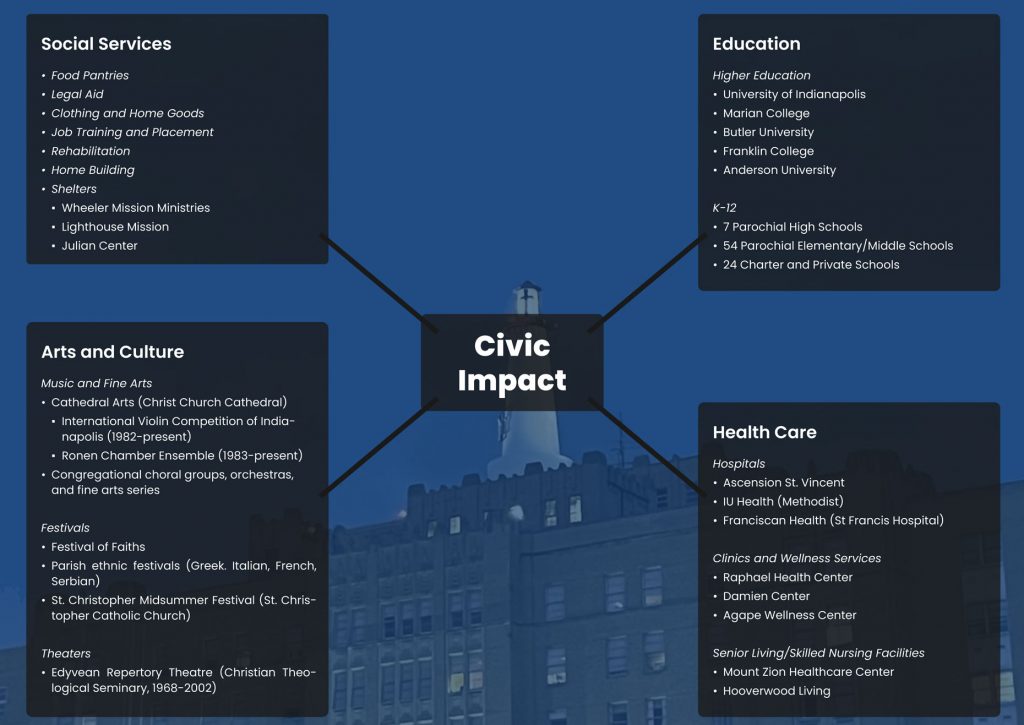
Atlas Sources
Data about church membership and religious groups is from the SAVI Community Information System and the Association of Religion Data Archives. Some data regarding Jewish Congregations comes from Judith E. Endelman, The Jewish Community of Indianapolis (Bloomington: Indiana University Press, 1984). The most comprehensive history of religion in Indiana is L. C. Rudolph, Hoosier Faiths: A History of Indiana Churches and Religious Groups (Bloomington: Indiana University Press, 1996).
Books about religion in Indianapolis include Arthur E. Farnsley II, et al., Sacred Circles, Public Squares: The Multicentering of American Religion (Bloomington: Indiana University Press, 2004), Etan Diamond, Souls in the City: Metropolitan Growth and Religious Change in Post-war Indianapolis (Bloomington: Indiana University Press, 2003), and Mary L. Mapes, A Public Charity: Religion and Social Welfare in Indianapolis, 1929-2002 (Indiana University Press, 2004).
Additional Information
Read these Encyclopedia of Indianapolis Entries for more information.
